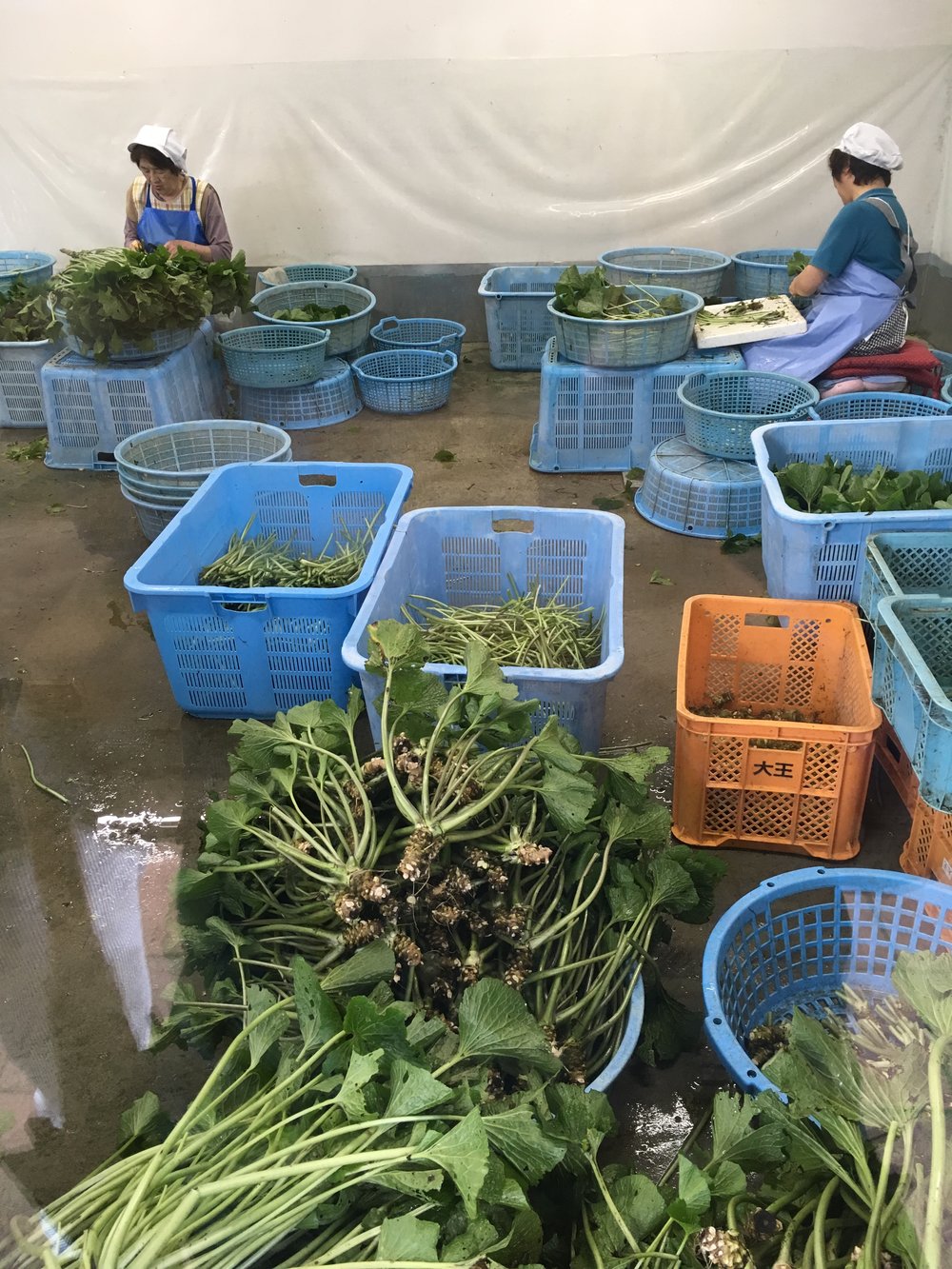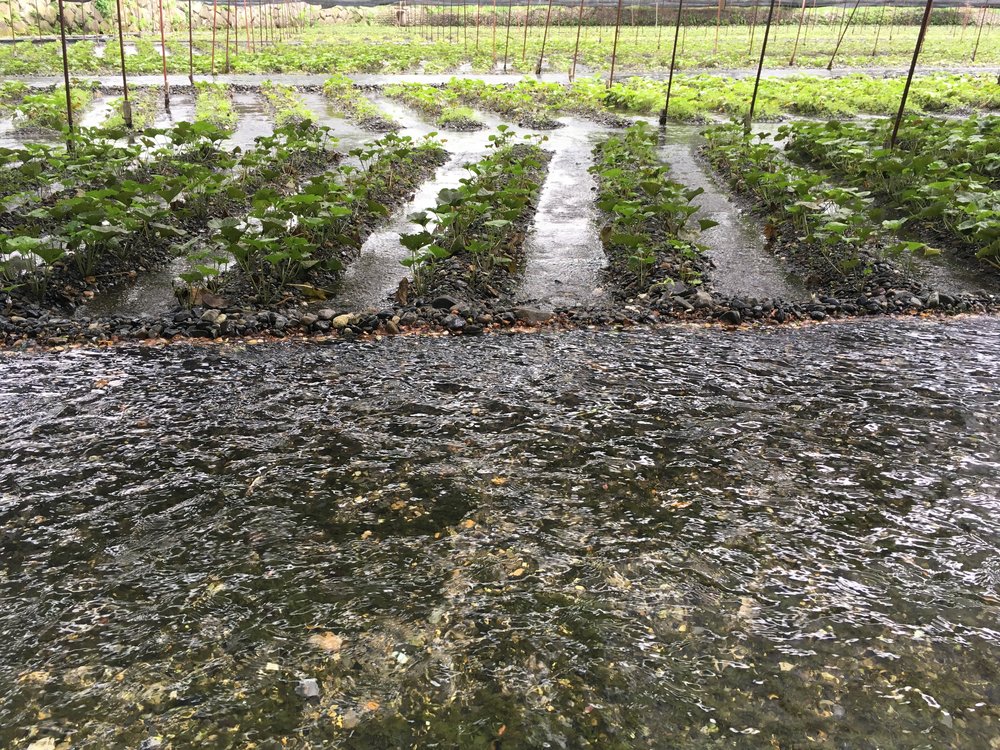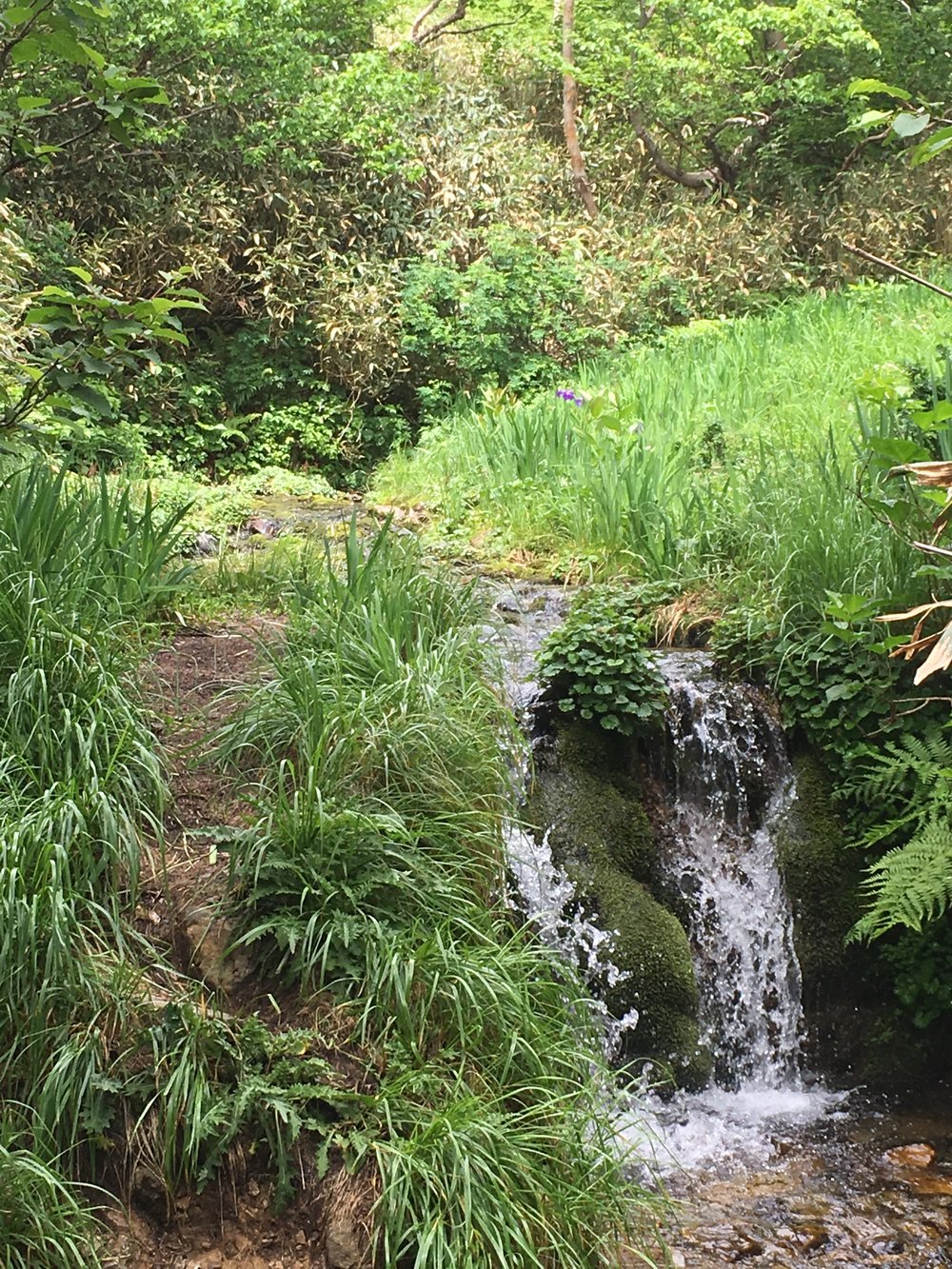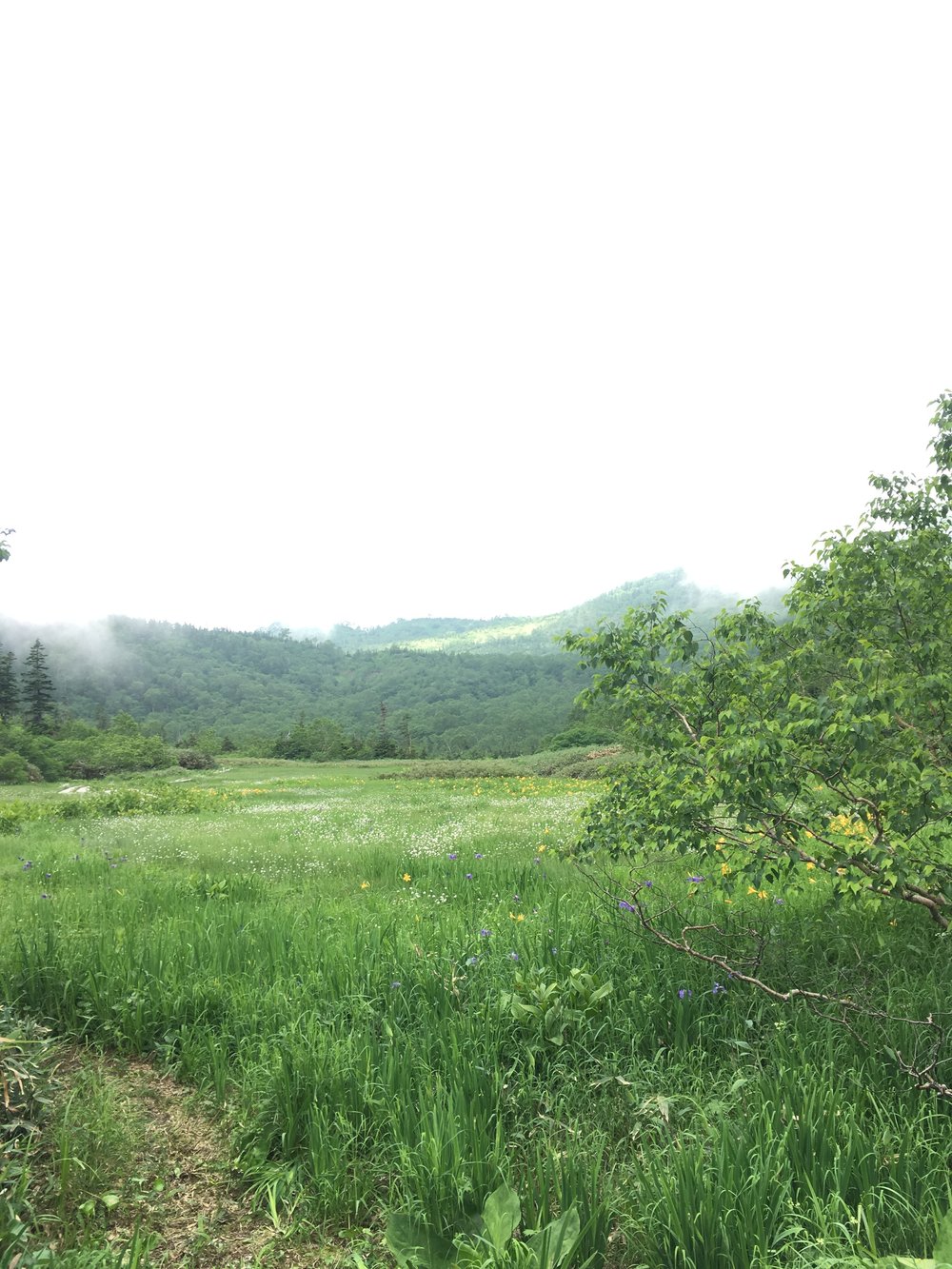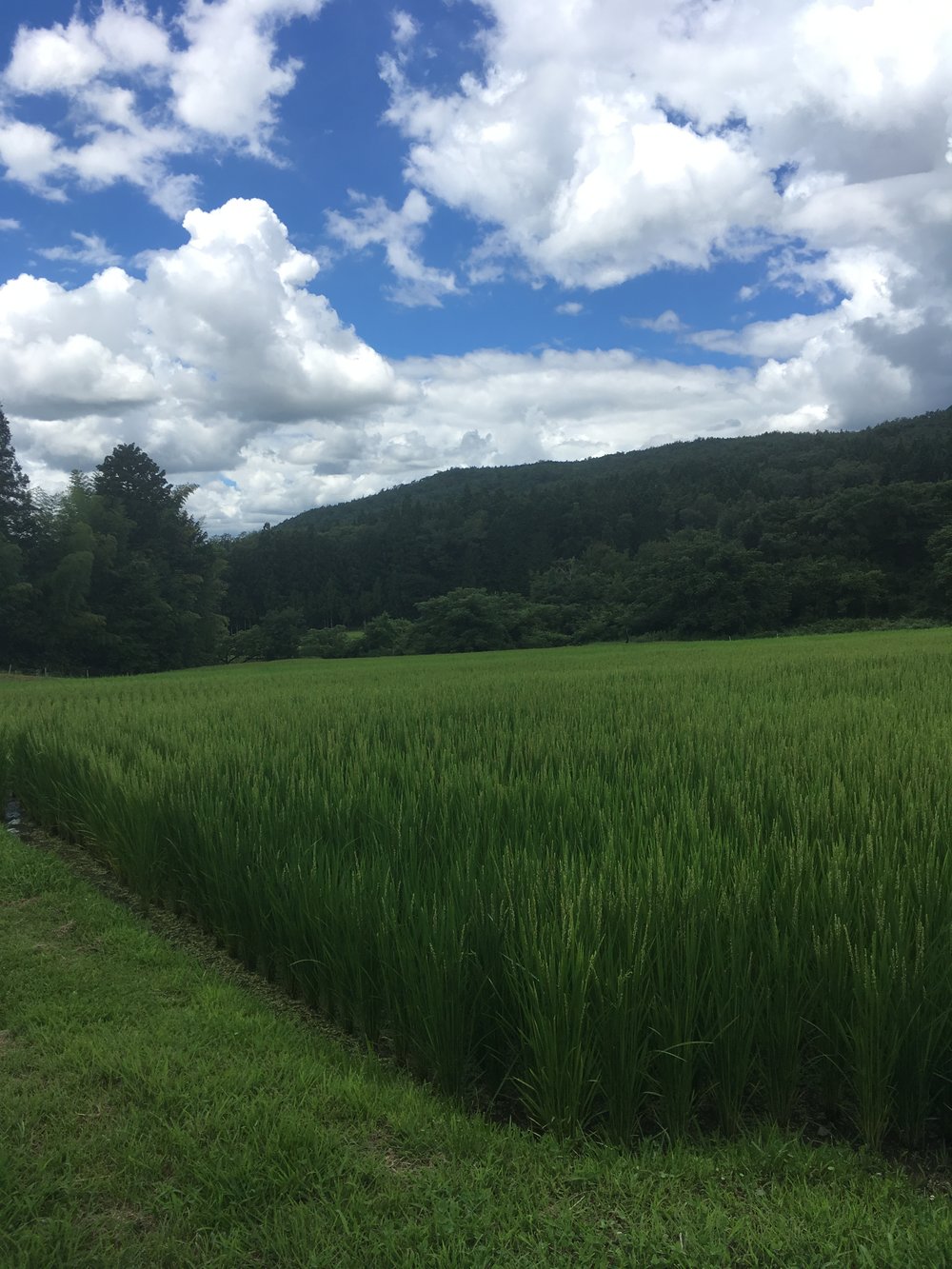
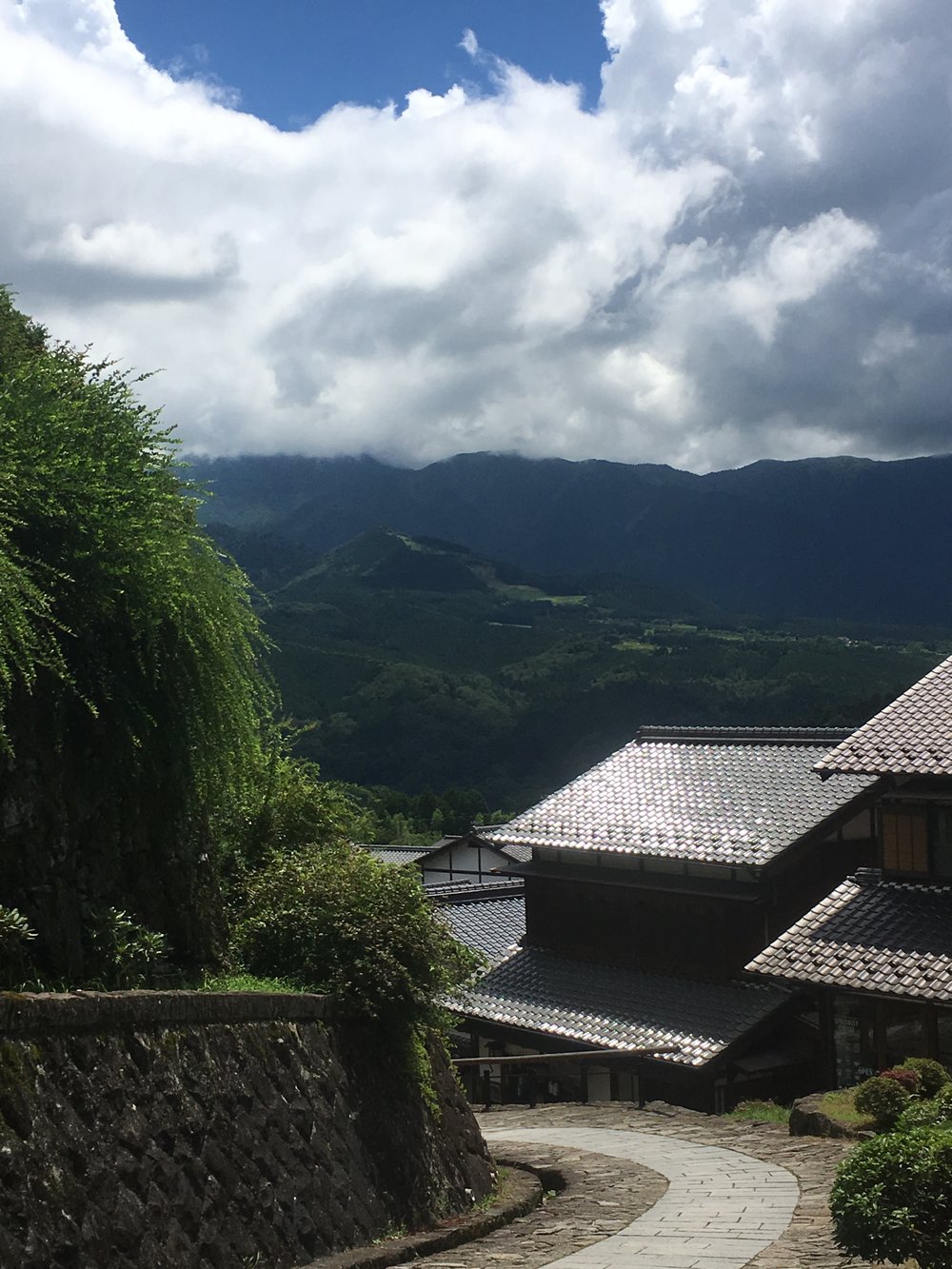

We are still on the road both by car and by foot with A. And after Tsunan, Hakuba, Azumino, Matsumoto, Kamikochi, Takayama, Gero, Ena we are now in the Kiso valley, or rather on the old road Nakasendo, in a very nice little inn where we are the only guests and very well taken care of. Our hike today, shortened by the heat has taken us to Magome juku, an old post town on the Nakasendo, one of the roads widely employed to travel between Kyoto and Tokyo in the past, a still very well preserved place with very picturesque views and old houses. Back at our inn: Shinchaya, our host had prepared a huge dinner as could be expected in every minshuku and ryokan. What is great with minshuku compared to ryokan is that it is more homemade-like food and easy to get recipes directly from the cook! For addresses and tips about traveling in the Kiso valley, please leave a comment!
This time the nice surprise was what is called yakimochi – 焼き餅 but it is not made of rice! The recipe is quite simple and the results quite delicious!
Yakimochi – 焼き餅 from Shinchaya
– a few taro – 里芋
– buckwheat flour
– salt
– soya sauce
– fresh ginger
Boil the taro, and peel them. Mash them with a fork, add some salt and the buckwheat flour to obtain a smooth mix. Make paddies with the mix and grill them (oven, pan…). Peel and grat the fresh ginger. Serve the grilled paddies with soya sauce and the ginger.
